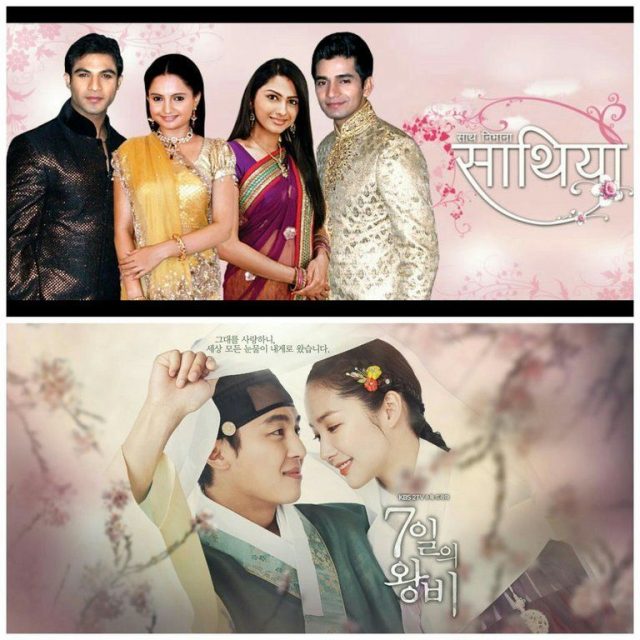T.V shows are a favourite amongst the majority of us. We love them so much that most of us have expanded our range to k-drama, which is short for Korean drama.
K-drama may be foreign and we might not understand their language if not for their subtitles but we love them anyway because, to be honest, they are not that different from Indian Shows.

K- drama is Your Typical Indian Show in another Context
K-drama may be Korean but one would find in it many similarities with Indian serials.
Underneath all the drama and all the tears, there are certain aspects that every TV drama swears by. These are especially prominent in Indian serials and K-drama.
To illustrate this, I shall take the example of an Indian Cinema called Kaisa Yeh Pyar Hai and a Korean drama called Boys over Flowers.
- Rich Boy, Poor Girl
in Kaisa Yeh Pyar, Kripa Sharma is an aspiring music student from Nainital who later falls in love with Angad Khanna, a popular singer.
Sounds familiar?
Yes, in Boys over Flowers, Jan Di, a simple girl with middle-class values falls into a relationship with Gu Jun Pyo who is rich and obnoxious.
In both instances, the love is a forbidden kind where the division of class is clearly highlighted.
It is your typical Cinderella story. Where the guy eventually wins the girls heart.
2. Scheming Mothers and Authoritative Fathers
In both shows, the family members of the lead actor forbid the guy from having any relationship with the girl. The difference between class and status is clearly highlighted.
Although the question of why it is always the guy who is representative of power and wealth is another issue which I do not want to go into.
3. Innocent Girl and Bad boy
Both Angad and Gu Jun Pyo, are portrayed as bad boys with an equally vulnerable side that a girl alone can redeem.
4. Love triangle
Dont we just love a twist in the story? Love triangles are always a classic in both Indian and Korean shows.
In Kaisa Yeh Pyar Hai, there is a love triangle between Kripa, Angad, and Prithvi, who is her friends brother.
In Boys Over Flowers, the love triangle exists between Jan Di, Gu Jun Pyo, and Yoon Ji Hoo.
In both cases, the second male lead is given a chance to win the womans hand but as in all dramas, it is always the male lead who wins her heart.
While there are many similarities between K-drama and Indian serials, there are also certain differences that set them apart.
1. Working Women
In most of the Indian cinemas, the girls are usually not working women. They may pursue their studies but in the end, their purpose is to be good homemakers and mothers.
In Kaisa Yeh Pyar Hai, the relationship between Angad and Kripa quickly turns into plans of a marriage with Kripa later conceiving Angads baby.
Most often in K-dramas, the women are usually working and struggle to make ends meet either in school or college or even at their offices. Women are therefore more independent.
In Boys Over Flowers, Jan Di works part-time for her family business as well as a waitress at a local restaurant.
2. Parallel Leads
In Indian serials, like Kaisa Yeh Pyar Hai, it becomes clear from the beginning that it is the male lead who will win the girls heart no matter what the circumstances
In K-drama, on the other hand, one is made to question if the lead actor will get the girl in the end. The tussle for love is never biased towards the male lead and even in the end, when Gu Jun Pyo returns, it is still not clear whether he will win Jan Dis heart or whether Jan Di has fallen for Ji Hoo instead.
The rise of the K-Drama!
Indian serials are a favourite among many but it is noticeable that recently, k-drama is making its way into the Indian scenario with dramas like Descendants of the Sun being aired in Indian channels like Zindagi.
One cannot really pinpoint as to why K-drama is so addictive and while there are many similarities with Indian serials, there are just those extra details in it that make it a notch better than the latter. Korean culture has taken the world by storm and it is here to stay.
Image Credits: Google Images
You May Also Like: 5 Game Of Thrones Season 7 Fan Theories That Will Blow Your Mind With Their Likelihood